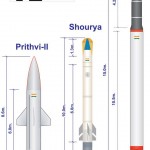
In 1980, while undergoing training at the Officers’ Training School, Madras, I had a chance to handle and firea 3.5 inch Rocket Launcher, the American anti-tank weapon produced in haste during the Korean War. An inert round was given between two cadets. It was up to the weapon instructor to give this rare privilege to whichever cadet he liked. I got the chance. The rocket left the muzzle so sluggishly that one could see it flying towards the target. Nevertheless, it hit the target.
On commissioning the same year, I was introduced to Rocket Propelled Grenade (RPG) 7V in the battalion. Serving in a mountain formation, the unit was authorized one RPG 7V per rifle company. This Soviet era anti-tank weapon has remained a weapon of choice for all irregular wars across the world.The RPG 7V was quite easy to handle and fire. Preparing for the Young Officers’ course, I must have done its weapon drill umpteen times under the watchful eyes of unit’s weapon instructor.
On Young Officer’s course in 1981, I was dismayed to see Carl Gustaf 84mm Rocket Launcher (84mm RL).The entire hard work on RPG 7V went in vain. The Carl Gustaf84mm RL was a new acquisition, set to replace all other company level anti-tank weapons in the army. At 14.7 kgs, it was a heavy weapon and along with its many types of ammunitions the battle load despite its two-men crew was little difficult to manage at the platoon level. We were told that each one of us would be responsible for training of 84mm RL detachments in the battalions. Firing of 84mm RL was certainly a good experience. Its range, accuracy and variety of aiming sights and ammunitions -high explosive (HE), high explosive anti-tank (HEAT), illuminating and smoke impressed us hugely. The HE and illuminating ammunitions were programmable; one could set range, impact or an air burst mode and height of burst. The army opted for HE, HEAT and illuminating ammunitions leaving the smoke as similar effect could be achieved by the legendary 2 inch mortar and 81mm mortar.
The Carl Gustaf84mm RL has stood the army in good stead. It has been effectively used on the line of control for counter infiltration and domination of enemy localities and in the hinterland in counter terrorist operations. It has been used by the special forces, infantry, Rashtriya Rifles, mechanized infantry, and all the other units which needed standoff capability against the enemy tanks and armoured personnel carriers. Interestingly, the Pakistan army is still using the RPG 7V. Over the years improved versions of 84mm RL have been introduced mostly reducing its length and weight making it handier.The current version of Carl Gustaf M3 used by the army weighs only 10 kgs.
In September, it was announced that the Swede arms manufacturer Saab will be setting up a new company Saab FFV (India)to co-produce latest generation of Carl Gustaf M4 84mm RL and itsammunitionunder‘Make in India’ indigenization programme. It is expected that the production in Saab FFV (India) facilityshall commence in 2024. Apart from satiating the demand of the Indian armed forces the facility will also supply weapon and components for the global market.
Currently, Advanced Weapons and Equipment India Limited and Munitions India Limited in collaboration with Saab are producing Carl Gustaf M3 rocket launchers and its ammunition.Capacity wise the production of Carl Gustaf M3 in India has stagnated and been limited to producing certain parts and assembly of weapon and ammunition.
Apart from the Carl Gustaf M4, there are some other anti-tank weapons from the stable of Saab which are battle proven. The AT4, man-portable, disposable, short distance rocket launcher is suitable for special forces operations and urban warfare. The other weapon of merit is the Next Generation Light Anti Tank (NLAW). With a combat range of 20–800 m and top attack capability, NLAW is proving to be nemesis for the Russian armour in Ukraine. Both these weapons are a part of the generous military aid package being given to Ukraine by many NATO countries.
The drawback of all recoilless weapons is their back blast, which flares out from the back of the weapon on firing. It can endanger men and material in the vicinity. Saab has addressed this issue by developing an HEAT 655 CSammunition, which can be fired from the closed spaces like bunkers and buildings, giving an advantage to the infantry against the armoured vehicles.
Taking a leaf from the Russo-Ukraine War, it will be advisable that Saab FFV (India) also manufactures anti-tank ammunitions with top attack capability and those which can be used from the confined spaces.
The Carl Gustaf M4 project can also help in developing loitering ammunition. The illumination ammunition of Carl Gustaf M3/M4 holds promise because of its range, height of burst and similar principle of operation akin to loitering ammunition. With suitable modifications, the pyrotechnic cargo of the illumination ammunition can be replaced with an armed drone.It can turn into loitering ammunition.The infantry needs a weapon system which can help it exploit the third dimension against the armour in the battlefield.





A good article. Col. Rathore could have educated us amateurs on current issue of Carl Gustaf per unit – is it one per platoon or one per rfl section? And a discussion of Carl Gustav in the bunker busting role would have been useful. Thank you colonel.
Very nice article…on a wonderful classic weapon…Col Rathore has highlighted that in the hands of an Infantrymen..it would stop the enemy in it’s tracks…
A very indepth analysis on comparison of weapon system
Very informative article. Experience of the author is comprehensive and all relevant details have been given to visualise the dynamics of the weaponry. Ye dil mange more!
Well articulated article!!
Atamnirbhar Bharat is the only answer to all needs.
Indians are capable of producing anything on earth with support from top!!